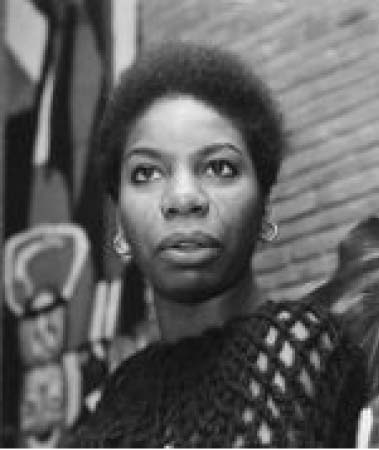
Although
the history of jazz is mainly dominated by the exploits of male jazz musicians,
the role of women in Jazz is just as significant as that of their men
counterparts. It is therefore noteworthy to observe that women in jazz have
played every instrument in every style and have engaged the same aesthetic and
technical developments as their male colleagues. Yet, with the exception of
singers and some pianist, women are invariably perceived as a new breed. They
are usually marketed as incipient and consumed as curiosities, but despite
their aura as being perpetually unprecedented, female jazz musicians do have a
history. The early music history of the roots of jazz is rich with the active
participation of African American women in spirituals, gospel and blues. Piano
music was always considered appropriate and desirable for women, and many
female pianist and composers participated in the ragtime craze of the early
1900’s. Although social expectations of what women should and could do impacted
their working conditions, reception and opportunities, female jazz musicians
have proven their worth repeatedly for over a century. One of the most
controversial female jazz musicians is a lady known for her revolutionary
stance and her pride of being black.
Her
birth name is Eunice Kathleen Waymon; she was born in Tryon, North Carolina,
USA on February 21st 1933. Better known
by her stage name Nina Simone, she was an American singer, songwriter, pianist
arranger and civil rights activist. She started playing the piano at the age of
three and aspired very early to become a classical pianist, while working in a
broad range of styles including classical, jazz, blues, soul, R&B, gospel
and pop. Nina has a distinctive style that is very original and wide- ranging,
consisting of a fusion of gospel and pop songs with classical music. She was
very much influenced by the classical composer Bach and injected as much of her
classical background into her music to give it more depth and quality. She
always felt that pop music was inferior to the classics and was very particular
with her choice of material for work during her career.
Nina
played her first concert when she was twelve. This performance was a classical
recital where she played the piano to a mixed audience. She later claimed that
during that performance, her parents who had taken seats in the front row were
forced to move to the back of the hall to make room for white people. Nina then
refused to play until her parents were returned to the front. This incident
announced the beginning of her involvement in the civil rights movement. After
finishing high school, Nina tried to enroll at the Curtis Institute of music,
but was rejected because of her being black. She then moved to the Julliard
School of Musicin New York where she would further her studies and
concentration on classical music techniques.
It
was not easy attending this private institution because she did not have a
scholarship, so, in order to fund her studies, she performed weekly at the
Midtown Bar and Grill in Atlantic City, New Jersey. She played the piano and
sang at this club and many other small clubs in the area, and in 1954, she
adopted the stage name – Nina Simone. During this period in 1958, she recorded
a single rendition of George Gershwin’s “I love You Porgy” which had already
been recorded by Billie Holiday who was one of her favorite singers. This
recording became a success and a billboard top 40 hit and was soon followed by
her debut album on Bethlehem Records – “Little Girl Blue”.
After
the success of “Little Girl Blue “, Nina landed a contract with a bigger
company, Colpix Records. The success of “Little Girl Blue “with Bethlehem
Records was bitter sweet because she was only paid $3000 for the recording
session, and was unable to benefit financially from millions in royalties after
the same song was re-released in the 1980’s as “My Baby Just Cares For Me”. Her
contract with Colpix was different and more empowering, giving Nina complete
creative control including the choice of material that would be recorded. A
string of studio and live albums would follow, and she performed mainly popular
music in order to make money and continue her studies in classical music. She
was indifferent to having a recording contract, and maintained this attitude
for most of her career.
In
1961, Nina married a New York police detective, Andrew Stroud who later became
her manager. The sixties was an era of civil rights politics and America was
undergoing a radical transformation. In 1964, she changed record companies from
the American, Colpix to the Dutch, Phillips. This gave her a little more
freedom and brought a change in the contents of her recordings. Nina had always
included songs that drew upon her African American origins in her repertoire,
and songs such as “Brown Baby” and “Zungo” were featured on her album “Nina at
the Village Gate”. However, on her debut
album with Phillips, she for the first time addressed the racial inequality in
the U.S.A. with the song “Mississippi Goddam”. This was her response to the
murder of civil rights activist Medger Evers and the bombing of a black church
in Birmingham, Alabama. The record was released as a single but also boycotted
in certain southern states. Civil rights messages became standard in her
recordings and live performances and she spoke at many civil rights meetings
such as the Selma to Montgomery march demanding equal rights for African
Americans.
Nina
was a strong admirer of Billie Holiday and featured Holiday’s song “Strange
Fruits” on the cover of her album ”Pastel Blues” released in 1965. The song
“Strange Fruits” is about the lynching of black men in the southern part of the
United States, and was from a poem by W. Cuney. Nina would change record
companies again, and in 1967, she signed with RCA Victor Records. Her first album
with RCA released in the same year under the title “Nina Sings the Blues”
featured a song written by her friend Langston Hughes, the playwright and
author. The song was called “Backlash Blues” and on another album “Silk and
Soul” released during the same period; she would record some of Billy Taylor’s
music. In 1968, she recorded the album “Nuff Said” which contained live
recordings made three days after the murder of Martin Luther King. The whole
performance was dedicated to King in a song entitled “Why (The King of Love is
Dead)”which was written by Gene Taylor, Nina’s bass player.
In
1970, Nina worked with producer Weldon Irwine and made Lorraine Hansberry’s
unfinished play into a civil rights song. The song entitled “To Be Young Gifted
and Black” was performed live and recorded on her album- ‘Black Gold’. A studio
recording was later released as a single and renditions of the song have been
recorded by Aretha Franklin and the late Danny Harthaway. A few months after
the release of the ‘Black Gold’, Nina left the U.S.A. and moved to the
Caribbean Island of Barbados. She went to Barbados alone, leaving her husband
and manager behind. There was lack of proper communication or miscommunication
between the two, and this, coupled with the fact that Nina left her wedding
ring behind, convinced her husband who was also her manager that she wanted a
divorce. This incident was very crucial in Nina’s career because her financial
records were not given the needed attention, and when she eventually returned
to the US, she learnt that there was a warrant for her arrest for unpaid taxes.
She was forced to return back to Barbados where she stayed for a few years
until her friend and fellow musician- Miriam Makeba convinced her to move to
Liberia. Nina stayed in Liberia for a brief period and later moved to
Switzerland and the Netherlands, before finally settling in France in 1992.
Nina
recorded her last album – “A Single Woman” in 1993 while living in Southern
France. She bought a house in Carry-Le- Rouet near Aix-en-Provence and stayed
there until her death in 2003. Her funeral service was attended by Miriam
Makeba, Patti Labelle, Poet Sonia Sanchez and actor Ossie Davis. She was
cremated according to her wish, and her ashes scattered in several African
countries.
Nina
Simone lived and died as a proud black woman.



